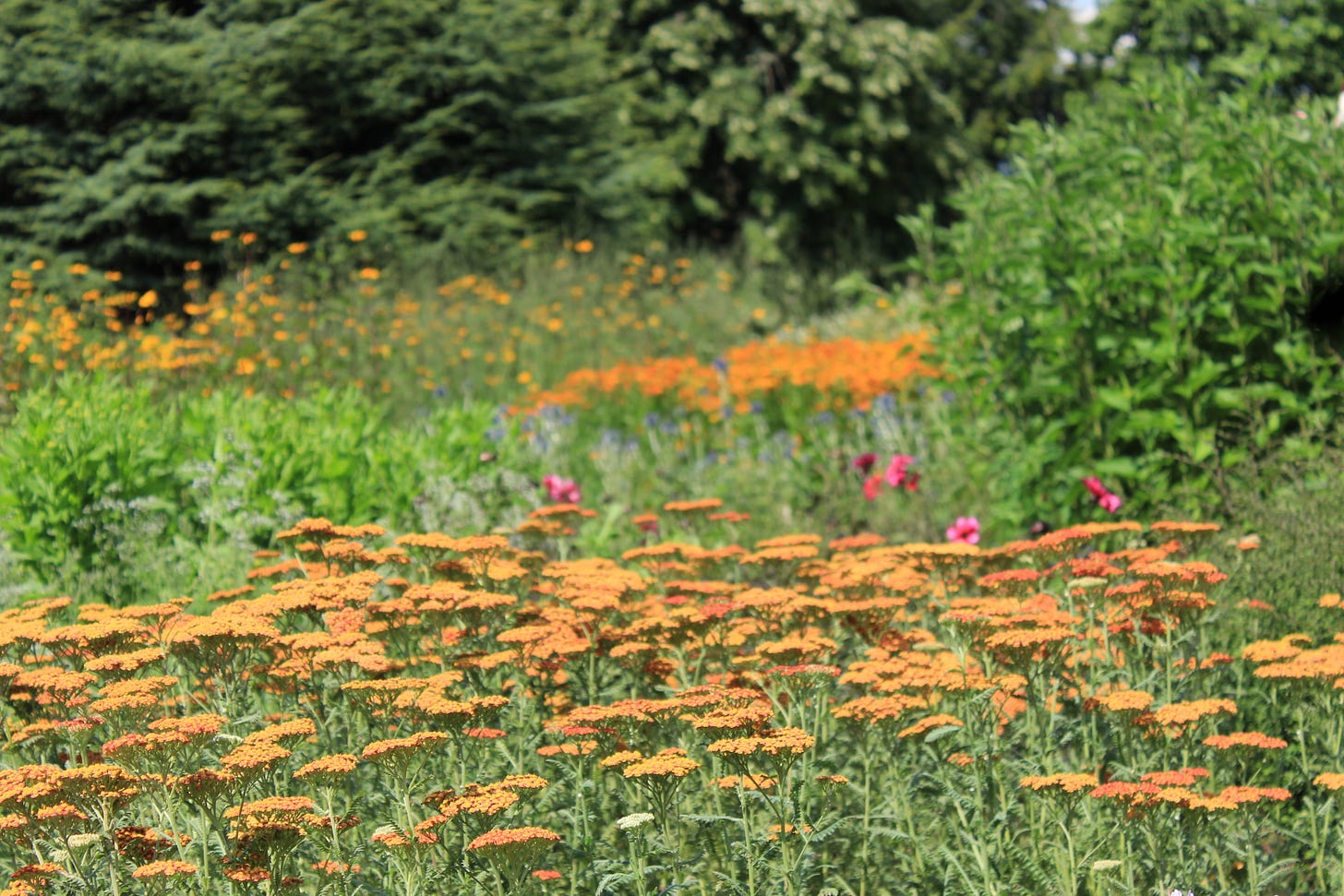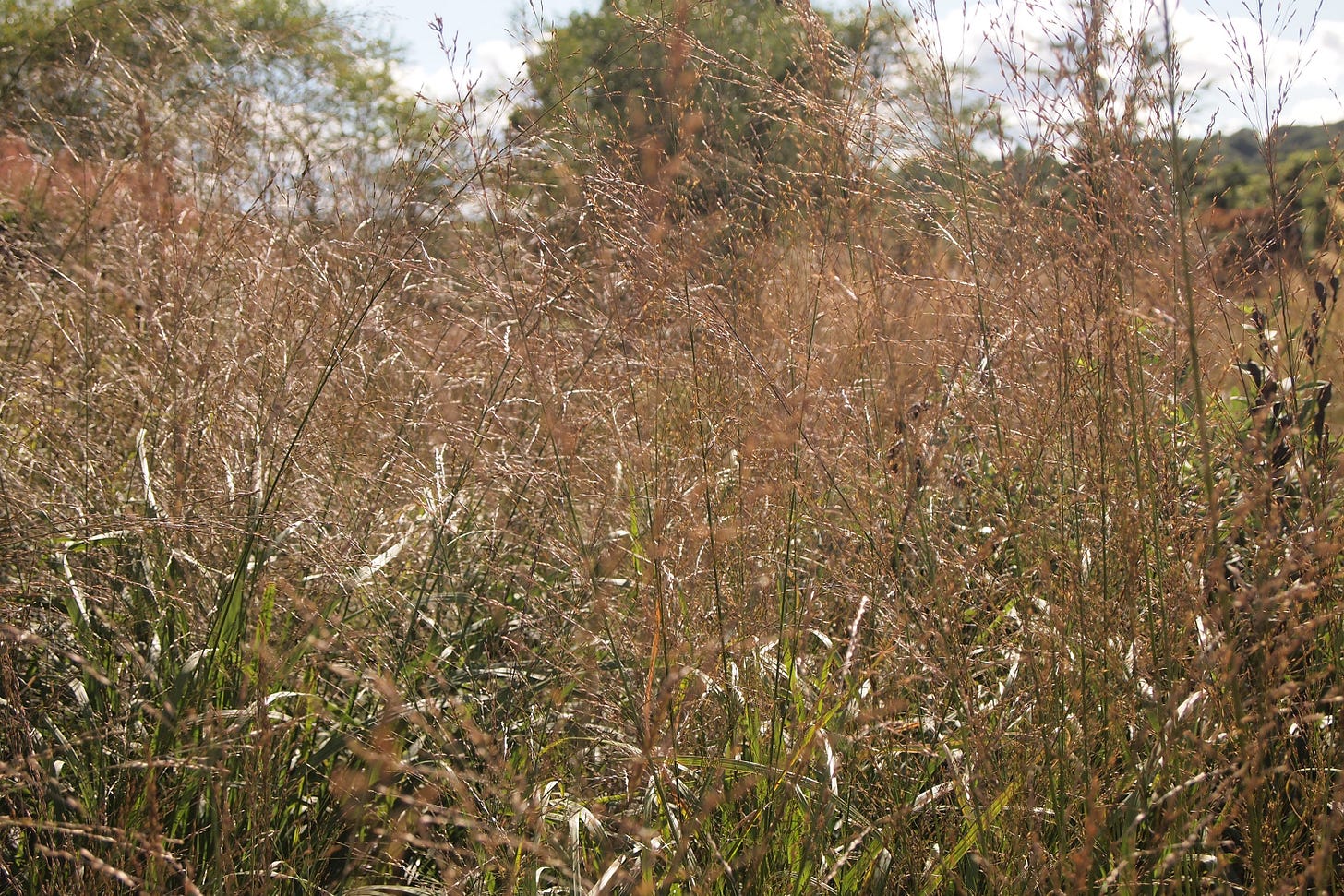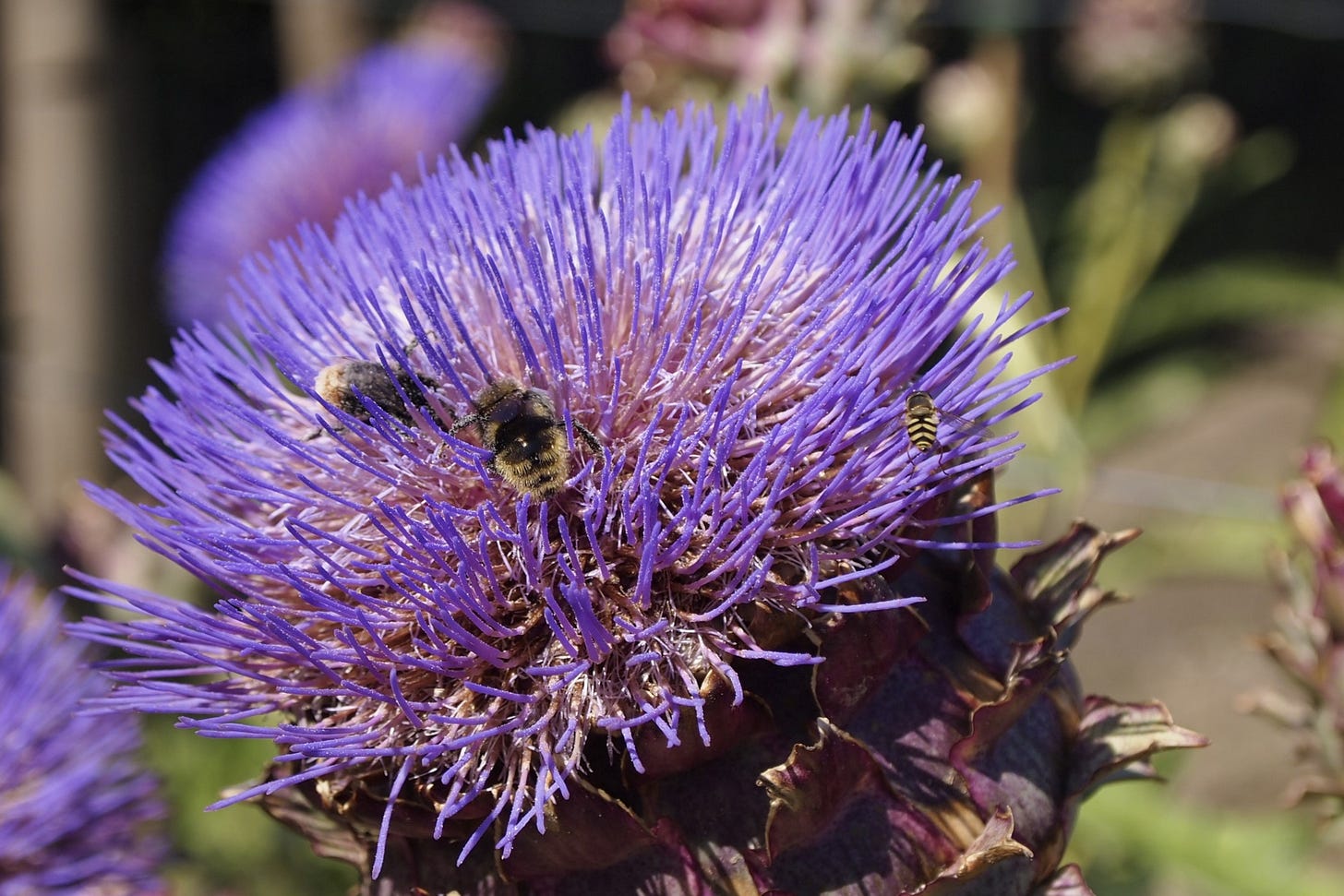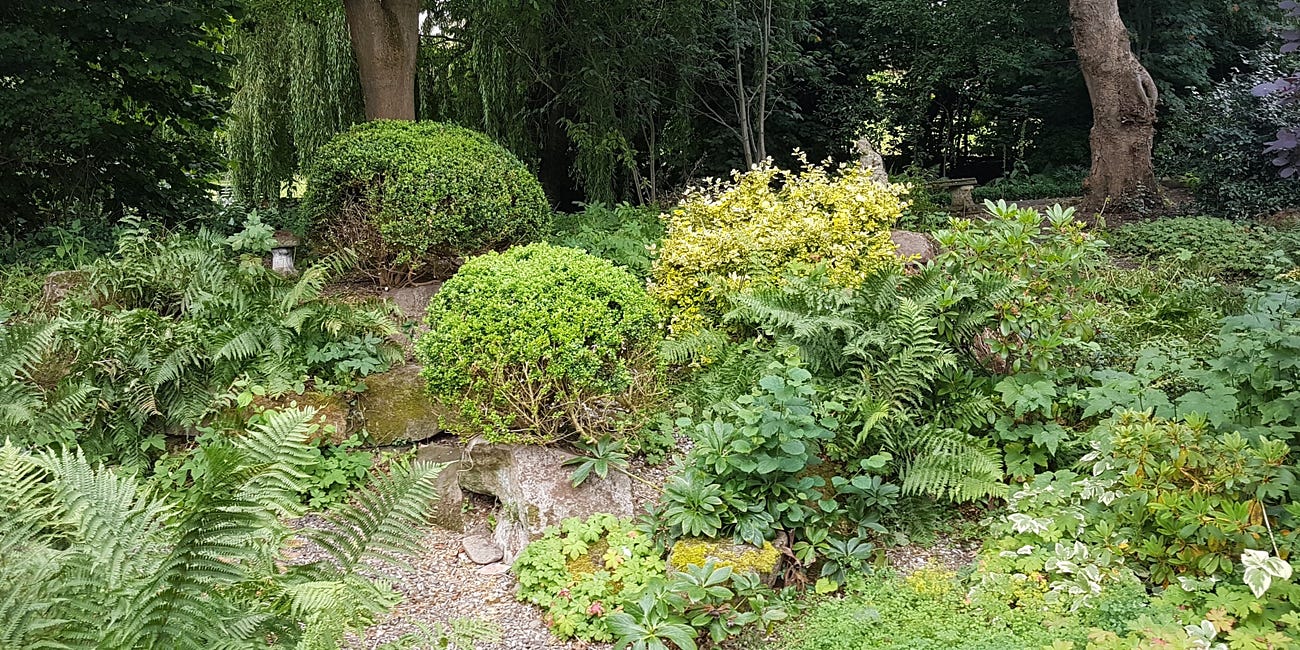What does gardening mean to you? Probably lots of different things. For many it’s the love of being outdoors, for some it’s nurturing and growing, often it’s the satisfaction of a job well done or a combination of those things. Gardening though is not a quick hit, a once and done, it’s a multi-faceted complex hobby, profession and passion.
My love of gardening means I also love nature and it’s fair to say that over the years I’ve become much more aware of how human activities are impacting our native wildlife, and how my gardening endeavours also have direct consequences for those creatures who share our environment.
Achillea Terracotta in all it’s glory at Kew Gardens
I want to share with you not just my love of gardening but also the principles that guide me, not just my everyday gardening but also when I’m designing gardens for community users or for my clients. They are not hard and fast rules, after all there are always exceptions to every rule in life, but they help me keep focused on what’s important to me. They also help me to learn, which is so important in life, learning to do things in a better more sustainable way and that encourages biodiversity and care of our environment.
1. Human users
This is just the most wonderful place to sit and contemplate, RHS Garden Bridgewater
Foremost gardens need to be places that we want to spend time in, places which excite our senses and fill our souls with joy. If they don’t then a garden can become a dull lifeless eyesore and a place dereliction. And you don’t need to look far to see a world full of front gardens that simply can’t bring joy to anybody!
A garden should be easy to use for all the potential garden users, large or small, able or not. It should also be fit for purpose and meet the needs of the garden users, so they can make the most of that outside space. It should be easy to maintain, though that is often a hotly contested notion as to what constitutes easy to maintain, however all gardens require some form of maintenance. Perhaps this is the ideal topic for a future post?
I also feel that gardens need to be relatable. I love a high concept show garden at Chelsea, challenging the norms, and inspiring gardeners to think differently. Everyone will nod in agreement, though few people actually want an edgy garden, people are often keener on something they understand as a garden.
Gardening should be enjoyable and rewarding, and ultimately about creating spaces that we want to spent time in and enjoy. If gardening is a chore, then perhaps think about what you can change to make gardening fun!
2. Work with nature
Panicum in late season at Trentham Gardens
In the past gardening has often been seen as the skill of the gardener to conquer the forces of nature to create perfection. Throughout history, the wealthy have commissioned architects and designers to create a version of nature tamed either formal or informal. I’ve written about the English Landscape Movement and Rousham Garden previously, it’s a very good example of literally carving up the landscape to create a physical representation of a mythical place, to try to create something that is better than nature.
It seems to me now that we have moved into a different era. The forward-thinking aesthetic is far less concerned with perfect striped lawn and disease-free roses, and far more focused on creating spaces that not only work with nature but often emulate nature. The organic gardening movement once categorised as eccentric is now leading the way. Where once upon a time Kings Charles’ wildflower meadows were seen as something of a novelty, gardeners are now successfully creating wildflower meadows in the smallest of spaces.
For me it’s about learning from nature, observing nature and bringing those lessons back into the garden, creating habitats where plants thrive and in turn provide wider habitats for wildlife. I actively avoid using chemicals in the garden, better to grow a plant which likes the location, than having to keep spraying just to keep it alive.
3. Watching the wildlife
A cardoon (Cynara cardunculus) with visiting bees and hoverflies
I’ll never forget seeing my first hummingbird moth in my garden in Gloucestershire in the mid 1990s, I was so excited. Whilst I still want to create wonderful gardens for people, my focus has now turned more towards creating wildlife habitats, especially in my own garden. However, by encouraging beneficial wildlife, you may also encourage pests. It’s a compromise I accept for the benefits I can see from wildlife thriving and flourishing in my garden.
What can we do as gardeners to bring more wildlife into our gardens? Well, there is a lot we can do, from just being a bit less tidy around the corners of the garden, allowing the odd patch of nettles to establish or having a full border of weeds. We can take care not to trim shrubs and hedges too neatly, allowing overgrowth to create habitat and hiding places. There is a lot we can do to make our gardens more accessible to wildlife and less clinical.
However, planting is also key. I’ve noticed a change over the last decade towards plants for pollinators and an increased focus on native planting. Those plants which have always grown here in the UK, particularly shrubs and trees, and provide the best habitat for our native wildlife. With such a dramatic fall in the bee and butterfly population we all need to do more to provide a haven for wildlife.
4. Right plant right place
Ferns, euphorbia, luzula and tellima happily growing in our woodland rockery
As an experienced gardener moving to a new garden is exciting, full of opportunity. However, I’ve been learning lots of hard lessons since moving to our current garden. We’re surrounded by trees which create plenty of shade at varying times of the day and drain the soil of moisture. Right plant right place has become something of a mantra for me.
There is pretty much nowhere in the garden that is full sun all day, plenty of the plants I’ve bought have failed, a combination of lack of sunshine, dryness and the ongoing attack by hordes of voracious snails and slugs devouring every new shoot at a surprising speed and agility. I refuse to use slug pellets, and so have paid the price for caring for wildlife. Plenty of plants do survive and it’s from those I am learning what does and doesn’t work in the garden, and devise ways of perhaps bringing some of my favourite flowering plants back into the garden.
No where more so have I learnt and succeeded than our shady woodland rockery . I wrote about this recently, just follow the link, and it’s been a success. It looks great from end of January through to May/June, and then only starts to look tired as the summer progresses. I spent a lot of time researching plants and trying out plants which were new to me, and I’m very pleased with the results. You can read more about the shady rockery here:
The next challenge is to rejuvenate our main borders and bring colour back into these semi shady spaces.
5. Minimise our impact
Climate change and the environmental damage that humans have caused is in the headlines daily and as gardeners we can recognise our contribution to climate change. In the past, I think about the litres and litres of peat-based compost I used to buy until I realised the damage it was causing. I think about the chemicals I’ve used on lawns to make them green and weed free. I reflect on the thousands I plants I must have purchase not just for me but for clients and the carbon footprint of that industry. I’m much more aware of the impact gardeners can have on their local environment as well as the wider environment. There are things we can all do to minimise out impact.
I have always reused and repurposed everyday items and garden materials to avoid throwing them away, such as plastic pots and seed trays, that just seems like common sense to me. However, artificial turf doesn’t really make sense to me, it stifles biodiversity, creates micro plastic pollution and will become a landfill issue in the future.
As mentioned, reuse plastics, particularly plant pots. Try growing seeds in pots made of rolled newspaper, which can then be planted straight into the ground when ready. Make your own compost, there are lots of benefits. For a start you’ll be recycling your own garden waste rather than sending it to landfill, and you’ll end up buying less peat free multipurpose compost from the garden centre which will reduce your spend and reduce your overall carbon footprint. Pallets make great compost bins, rather than purpose bought wood.
I’ve really only touched on some of these topics, so watch out for more posts with more detail in the future.
Thanks for reading and happy gardening.
Craig x











You're in Gloucestershire??? Practically next door to Veddw!
Alas, no longer, South Staffs now, but I do miss Gloucestershire lots. Thanks for subscribing.